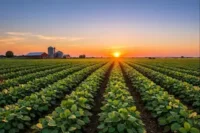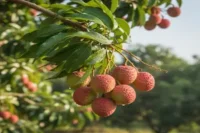Exploring the Different Parts of a Corn Plant: A Comprehensive Guide
Published: 22 Mar 2025
Corn, also known as maize, is one of the most widely cultivated crops in the world. Its versatility and nutritional value have made it a staple food for millions of people across the globe. But have you ever stopped to think about the different parts of a corn plant and how they contribute to its growth and development? In this comprehensive guide, we will take a closer look at the various parts of a corn plant and explore their functions.
From the roots that anchor the plant in the ground to the tassel that produces pollen, each part plays a vital role in the life cycle of this remarkable plant. So, let’s dig deeper into the fascinating world of corn and discover the intricacies of its anatomy. Join us as we unravel the mystery of the parts of a corn plant and gain a deeper appreciation for this remarkable crop.
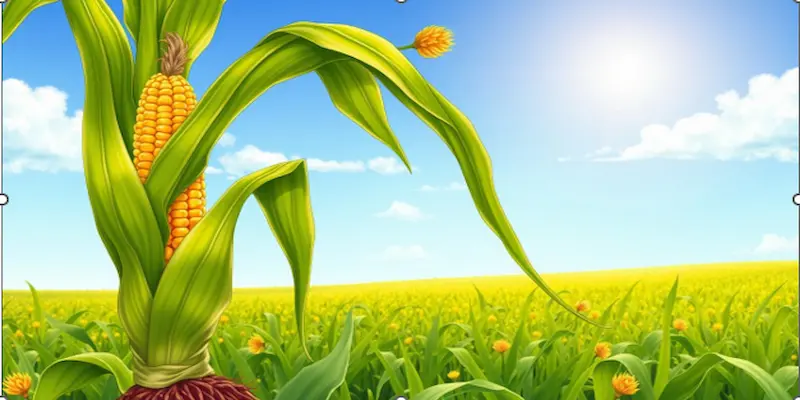
Understanding the Anatomy of a Corn Plant
Corn plants are a common sight in many agricultural landscapes, but have you ever stopped to wonder about the anatomy of these tall and versatile plants? Understanding the various parts of a corn plant can provide valuable insights into its growth and development.
At the base of the corn plant is the root system, which consists of a primary root and several lateral roots. These roots play a crucial role in anchoring the plant in the ground and absorbing water and nutrients from the soil. As the plant grows, the root system expands to support the increasing needs of the growing plant.
Above the ground, the stem of the corn plant emerges from the soil and extends upward, providing support for the leaves, flowers, and eventually the ears of corn. The stem not only acts as a structural support but also transports water and nutrients from the roots to the rest of the plant. Additionally, the stem contains nodes, which are points where leaves attach, and internodes, which are the spaces between the nodes.
The leaves of a corn plant are long, narrow, and arranged alternately along the stem. They play a vital role in photosynthesis, converting sunlight into energy for the plant. The leaves also contain a waxy outer layer that helps reduce water loss and protect against pests and diseases.
As corn plants reach maturity, they produce flowers known as tassels and ears. The tassel is the male reproductive structure that releases pollen, while the ear is the female reproductive structure that contains the corn kernels. This pollination process is essential for the development of corn kernels, which serve as a food source for humans and animals alike.
| Component | Description |
| Root System | Extends up to six feet deep, supports the plant, and absorbs nutrients. |
| Shoot System | Includes the upright stalk and nodes, supporting leaves and reproductive parts. |
| Leaves | Arranged alternately for maximum sunlight capture; last leaf called the flag leaf. |
| Reproductive Structures | Includes tassel, silk, and ear; critical for pollination and kernel development. |
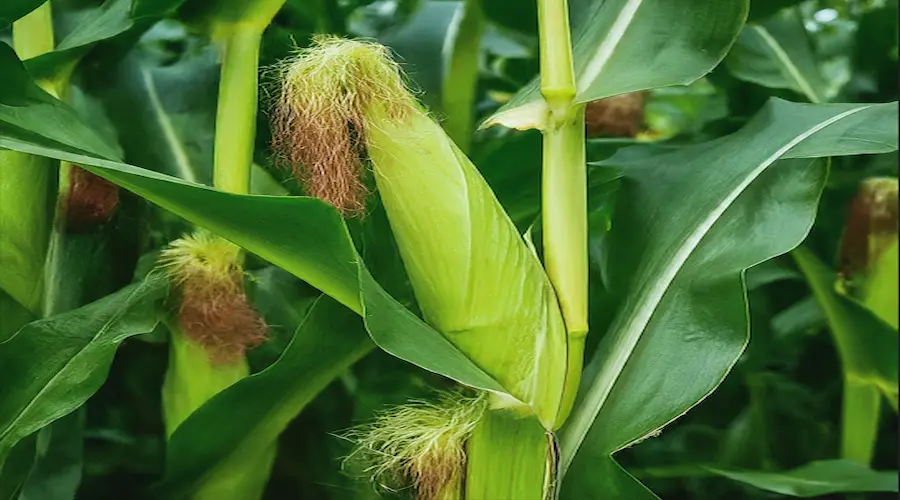
In conclusion, understanding the anatomy of a corn plant allows us to appreciate its complexity and the intricate processes involved in its growth. From the roots to the leaves, stem, and reproductive structures, each part of the corn plant serves a specific function in its overall development. So the next time you come across a field of corn, take a moment to admire the incredible anatomy of these plants and the significant role they play in our lives.
The Root System of a Corn Plant
The root system of a corn plant is an intricate network of roots that serves as the foundation for its growth and development. Made up of several different parts, these roots play a crucial role in absorbing water, nutrients, and providing support to the plant.
First and foremost, there are the primary roots, which emerge from the seed and begin to grow downwards into the soil. These primary roots are responsible for anchoring the plant and extracting water and minerals from the soil. As the plant continues to grow, secondary roots start to form, branching out from the primary roots. These secondary roots greatly increase the surface area available for nutrient absorption.
Apart from the primary and secondary roots, corn plants also have adventitious roots. These roots arise from the lower part of the stalk and spread horizontally in the upper soil layer. Adventitious roots aid in the absorption of water and nutrients, especially during times of drought or when nutrients are scarce.
The root system of a corn plant is a vital component that allows the plant to reach its full potential. Understanding the different parts of a corn plant’s root system can help farmers make informed decisions on how to optimize soil health and provide the necessary conditions for the plant’s growth. By ensuring a healthy and robust root system, farmers can cultivate corn plants that are more resilient, productive, and ultimately contribute to a bountiful harvest.
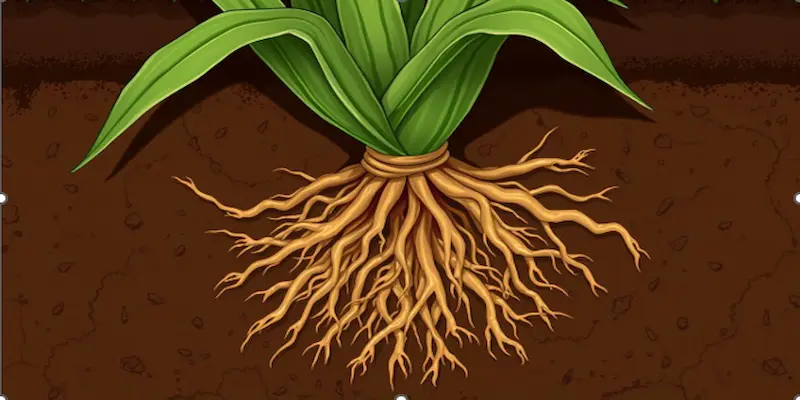
Stalks and Nodes: The Supportive Structure
When we think of plants, we often imagine them as delicate and fragile. However, plants have an incredible supportive structure that allows them to stand tall and thrive. One such example is the stalks and nodes found in corn plants. These components play a vital role in providing support and stability to the plant.
The stalks of a corn plant are the main vertical stems that extend from the ground upwards. They are sturdy and fibrous, enabling the plant to withstand wind and other external forces. The stalks also serve as conduits, transporting water and nutrients from the roots to other parts of the plant. Without these strong stalks, corn plants would be unable to grow tall and produce their iconic ears of corn.
Nodes, on the other hand, are the points at which leaves and branches originate along the stalk. They act as important attachment points, connecting the various parts of the plant. Nodes are also responsible for the production of lateral roots, which further anchor the plant in the soil. Additionally, nodes play a crucial role in the process of photosynthesis by providing a platform for the leaves to capture sunlight and convert it into energy.
Understanding the anatomy of a corn plant, particularly its stalks and nodes, helps us appreciate the resilience and efficiency of nature. It reminds us that even seemingly delicate organisms possess incredible strength and adaptability. So the next time you pass by a field of corn, take a moment to marvel at the stalks and nodes that allow these plants to thrive against all odds.
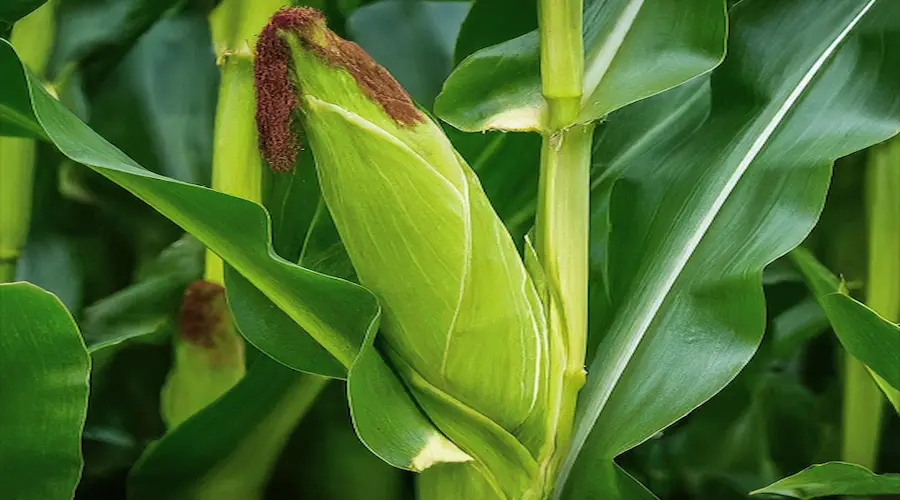
Leaves and Their Role in Photosynthesis
Leaves are an integral part of the process of photosynthesis, which is the process by which plants convert sunlight into energy. They play a crucial role in this process as they contain a pigment called chlorophyll, which is responsible for capturing sunlight. The chlorophyll in the leaves absorbs sunlight and converts it into chemical energy to fuel the plant’s growth and development.
The leaves of a plant are made up of various parts, each with a specific function in photosynthesis. The outer layer of the leaf, called the cuticle, serves as a protective barrier against excessive water loss. Just beneath the cuticle is the upper epidermis, which helps in the absorption of sunlight. The palisade layer, located below the epidermis, is where most of the chlorophyll is found. It is responsible for capturing sunlight and converting it into energy for the plant.
Underneath the palisade layer lies the spongy mesophyll, which is composed of loosely packed cells that provide space for the exchange of gases, such as carbon dioxide and oxygen. Finally, the lower epidermis contains stomata, which are tiny openings that allow for the intake of carbon dioxide and the release of oxygen.
In conclusion, leaves are essential for the process of photosynthesis in plants. Their various layers and components work together to absorb sunlight, convert it into energy, and facilitate the exchange of gases needed for this process. Understanding the structure and function of leaves can help us appreciate the remarkable intricacies of nature and the fundamental role that plants play in sustaining life on our planet.
Unveiling the Mystery of Corn Ears
Corn is a staple crop, enjoyed in various forms around the world. However, the corn ear – the part of the plant that contains the kernels – remains somewhat of a mystery to many. To understand this fascinating part of a corn plant, let’s delve into its intricate components.
Firstly, the silk. The silky threads that emerge from the top of the ear are part of the female flower of the corn plant. Each silk strand represents a potential kernel, and they serve as the receptacle for pollen to fertilize the ovules. These delicate strands play a crucial role in the reproduction process of corn.
Next, we have the husk. The tough, papery husk envelops the corn ear, protecting it from the elements. It shields the developing kernels from pests and humidity, ensuring their safe growth. The husk also serves as a natural moisture barrier, preserving the corn’s freshness.
Lastly, the kernels themselves. These small, yellowish nuggets are the edible part of the corn ear. Each kernel begins as a tiny ovule, which, when fertilized by the pollen carried by the silk, transforms into a starchy, juicy kernel. These kernels are essential for both human and animal consumption, offering a multitude of nutritional benefits.
Overall, the corn ear is a fascinating marvel of nature. From the delicate silks to the protective husk and the delicious kernels, each part plays a vital role in the life cycle of the corn plant. Understanding the intricacies of these components allows us to appreciate and enjoy the wonders of corn in all its forms, from popcorn to tortillas and beyond.
Learning About Corn Silk and Its Importance
Corn is a staple food and a fascinating plant. While most of us are familiar with the kernels, there is another part of the corn plant that often goes unnoticed – the corn silk. Corn silk refers to the soft, hair-like strands that protrude from the top of the ears of corn. It may not look like much, but it plays a crucial role in the growth and reproduction of the corn plant.
Corn silk is formed as part of the reproductive structure of the corn plant. Each strand of corn silk is actually a thread-like stigma, which is the female part of the corn flower. It collects pollen from the tassel, which is the male part of the plant, and transfers it to the developing kernels. This process is known as pollination and is essential for the production of corn plants.
Apart from its role in pollination, corn silk has been used for centuries for its medicinal properties. It is rich in antioxidants, vitamins, and minerals that have been known to support healthy kidney and urinary tract function. In traditional medicine, corn silk has been used as a natural diuretic to promote urine flow and to help alleviate symptoms of urinary tract infections and kidney stones. Additionally, it has been investigated for its potential to reduce inflammation and manage blood sugar levels.
In conclusion, corn silk may be overlooked, but it is an important part of the corn plant and has various potential health benefits. Next time you come across a corn cob, take a moment to appreciate the intricate roles played by all the parts of a corn plant, including the often underestimated corn silk.
| Soil Moisture Deficits | Delays silk emergence, disrupts synchrony with pollen shed |
| Drought Stress | Desiccates silks, causing them to be non-receptive |
| High Temperatures | Contributes to desiccation and delayed silk emergence |
| Insect Clipping | Eliminates or diminishes viable silk tissue |
| Silk “Balling” | Unsuccessful emergence due to convoluted silk inside husk |
The Intricate Details of Corn Tassels
When it comes to the intricate details of corn plants, one component that often catches our attention is the corn tassel. The tassel, also known as the male flower of the corn plant, plays a vital role in the reproductive process of this staple crop. Situated at the top of the corn stalk, the tassel displays an array of slender, thread-like structures that release pollen grains into the air.
The anatomy of a corn tassel is fascinating. At the base of the tassel, there is a shoot called the rachis, from which multiple branches called spikelets emerge. These spikelets can further divide into florets, each containing stamens that produce the pollen. The tassel exhibits an extraordinary level of complexity, with hundreds of florets coming together to form a seemingly chaotic arrangement of filaments.
While the corn tassel may appear ornamental, its purpose is far from just aesthetic. The primary function of the tassel is to release pollen, which is carried by the wind or pollinating insects, to the silk emerging from the ear of corn. This process leads to fertilization, as the pollen grains land on the sticky stigmas of the silk, allowing for the production of kernels.
In conclusion, the corn tassel is a vital part of a corn plant’s reproductive system. Its intricate structure and ability to release pollen are essential for successful fertility and the production of corn kernels. So the next time you pass by a cornfield, take a moment to appreciate the intricate details of these remarkable tassels, as they play a crucial role in our food production.
Reproductive Parts: Corn Kernels and Husks
Corn is a staple crop that has been cultivated for centuries. When we think of corn, we often associate it with the tasty yellow kernels on our dinner plates. However, there is more to corn than meets the eye. Corn plants have various reproductive parts that are essential for their growth and reproduction.
At the heart of every corn plant are the tassels and ears. The tassels, which appear at the top of the plant, are the male reproductive parts. They release pollen, which is carried by the wind to the ears, the female reproductive parts. The ears contain hundreds of tiny flowers known as silk, where each kernel of corn originates.
The corn kernels themselves are the seeds of the plant. They develop from the fertilized flowers on the ears. Each kernel is protected by a tough outer layer called the husk. The husk serves as a shield against pests and provides moisture regulation for the developing kernels. It is this husk that we peel back to reveal the succulent kernels we enjoy on our plates.
In conclusion, corn plants have several reproductive parts that work together to ensure their survival and propagation. From the tassels and ears to the silk and husks, each component plays a crucial role in the growth and development of corn. Next time you enjoy some corn, take a moment to appreciate the intricate beauty of its reproductive process.
Nurturing the Growth of a Corn Plant
Corn, also known as maize, is one of the most widely grown crops around the world. Its versatility and nutritional value make it a staple in many diets. However, growing corn is not as simple as planting a seed and waiting for it to grow. Nurturing the growth of a corn plant requires careful attention to its various parts and specific needs.
First and foremost, understanding the parts of a corn plant is crucial for successful cultivation. A corn plant consists of several key components, including the roots, stem, leaves, tassel, and ear. The roots provide stability to the plant and absorb water and nutrients from the soil. Meanwhile, the stem supports the plant, transporting water and nutrients from the roots to the rest of the plant.
The leaves of a corn plant are responsible for capturing sunlight and converting it into energy through photosynthesis. The tassel, found at the top of the plant, produces pollen, which is essential for pollinating the female flowers. On the lower part of the plant, the ears develop, containing the kernels that we eventually harvest.
To nurture the growth of a corn plant, it is important to provide the ideal growing conditions. Corn requires well-drained soil with adequate moisture and a pH level between 5.8 and 6.8. Planting corn in rows helps ensure proper spacing and allows for better air circulation. Regular watering, especially during dry spells, is crucial for healthy growth.
Additionally, providing sufficient sunlight to the plants is essential. Corn needs at least six hours of direct sunlight daily. Fertilizing the soil with a balanced blend of nutrients is also necessary for optimal growth. Regular monitoring for pests and diseases is vital, as corn plants are susceptible to various insects and fungal infections.
In conclusion, nurturing the growth of a corn plant requires knowledge of its different parts and their functions, as well as providing suitable growing conditions. With proper care and attention, you can cultivate a healthy and productive corn crop. So, if you’re thinking of growing corn, remember to tend to each part of the plant and watch as it flourishes into a bountiful harvest.
Questions and Answer Related Parts Of a Corn Plant
The main stem of a corn plant is called the stalk
The stalk of corn is simply referred to as the stalk or stem, which supports the leaves, ears, and tassels.
Corn is the seed or fruit of the corn plant. The kernels are seeds, while the cob is part of the flower structure
Corn is a seed. Each kernel is a seed that can grow into a new corn plant. The stalk, on the other hand, is the stem
Conclusion:
In conclusion, understanding the different parts of a corn plant is essential for anyone interested in agriculture or plant biology. By knowing the structures and functions of the various components, growers can better care for their crops and maximize their yield.

- Be Respectful
- Stay Relevant
- Stay Positive
- True Feedback
- Encourage Discussion
- Avoid Spamming
- No Fake News
- Don't Copy-Paste
- No Personal Attacks



- Be Respectful
- Stay Relevant
- Stay Positive
- True Feedback
- Encourage Discussion
- Avoid Spamming
- No Fake News
- Don't Copy-Paste
- No Personal Attacks

